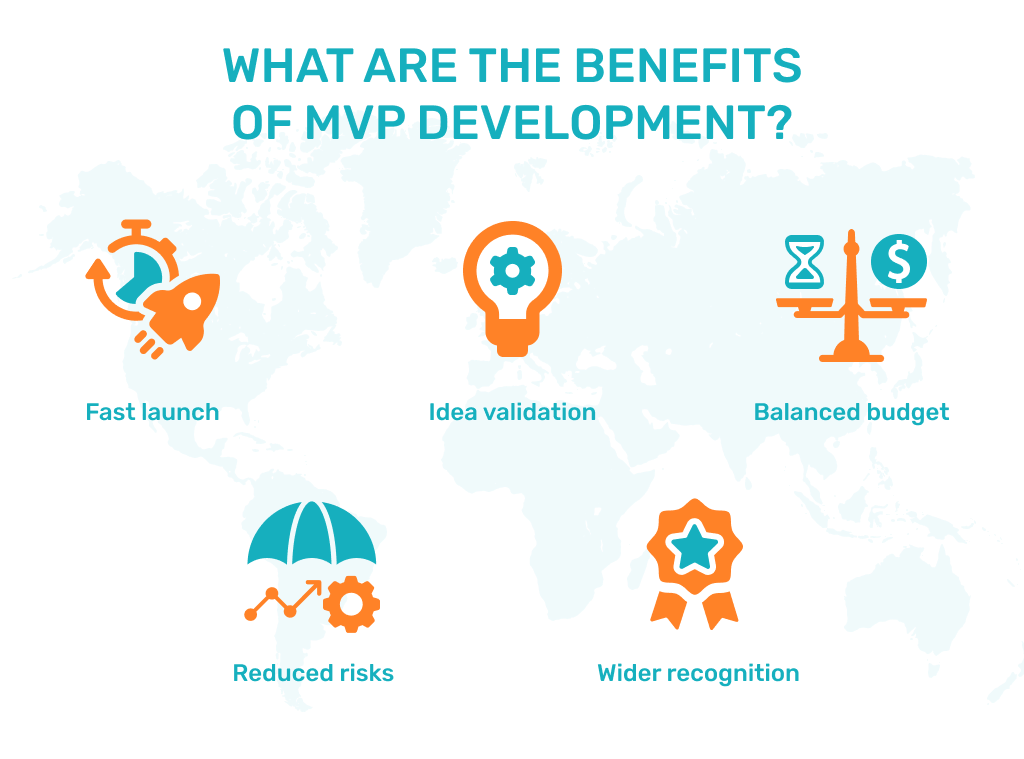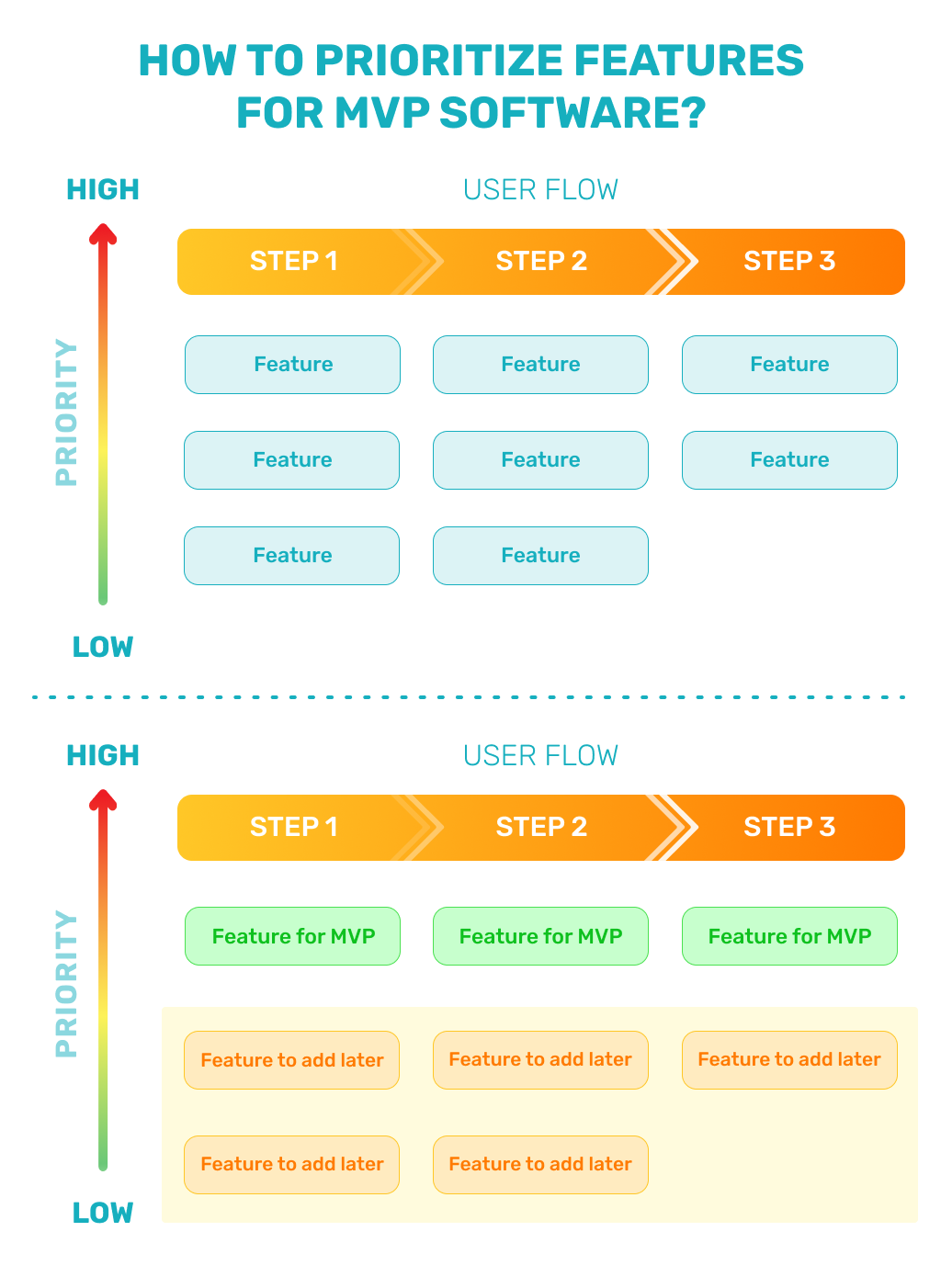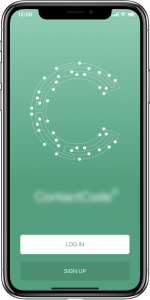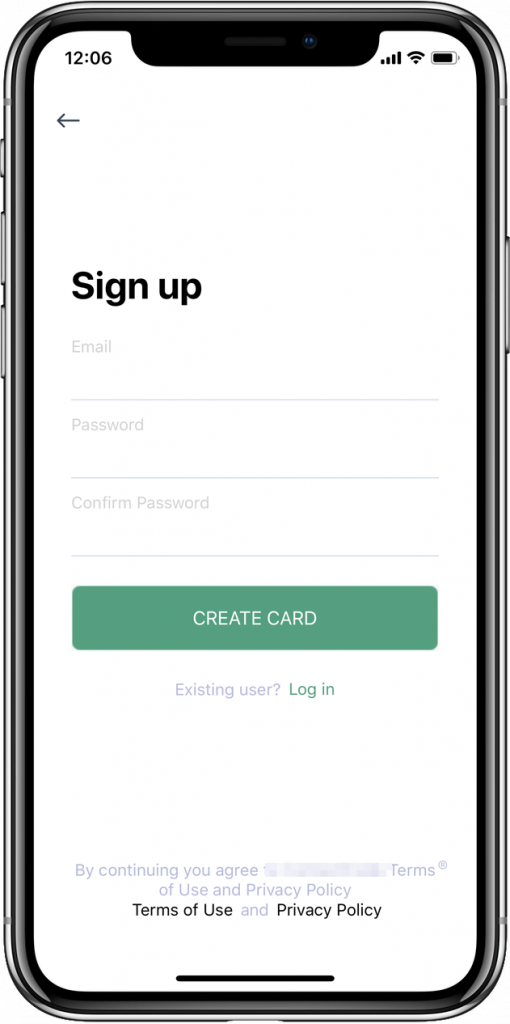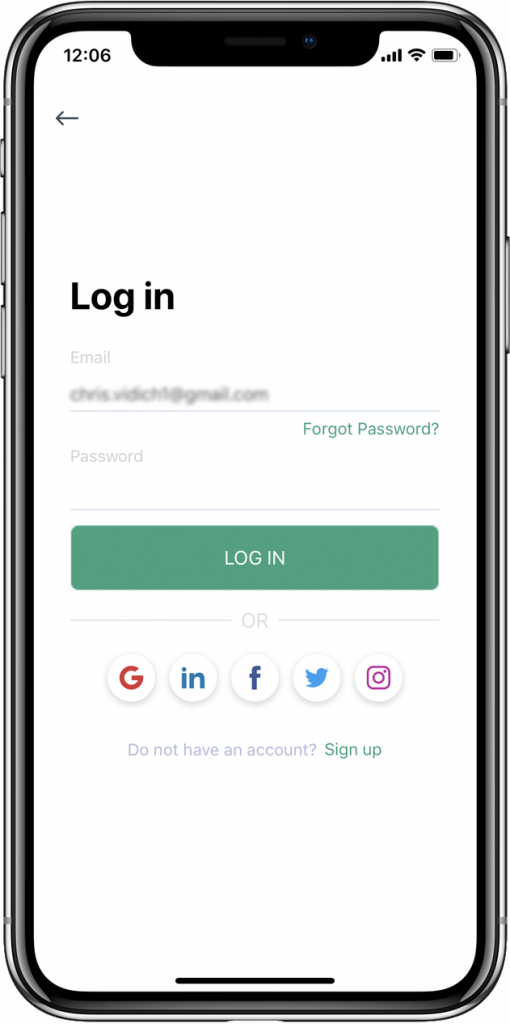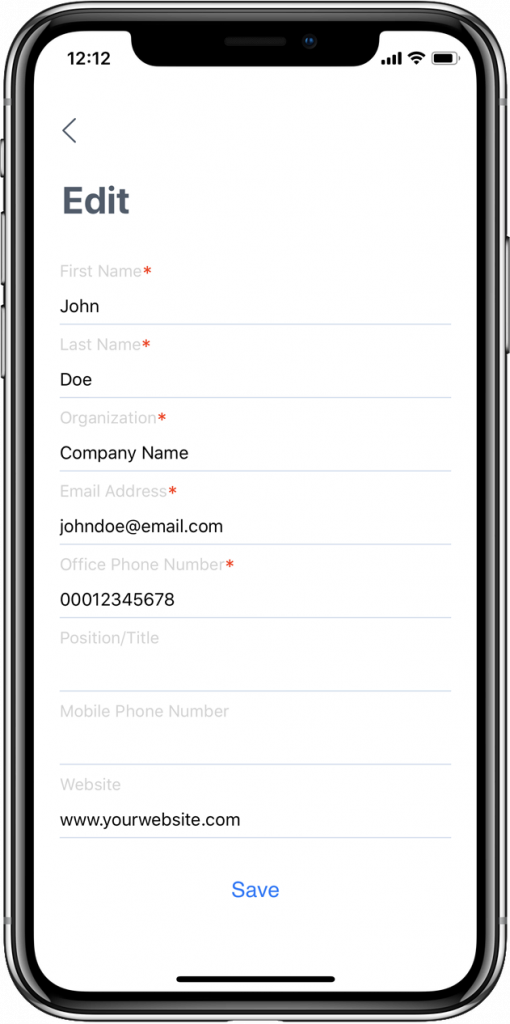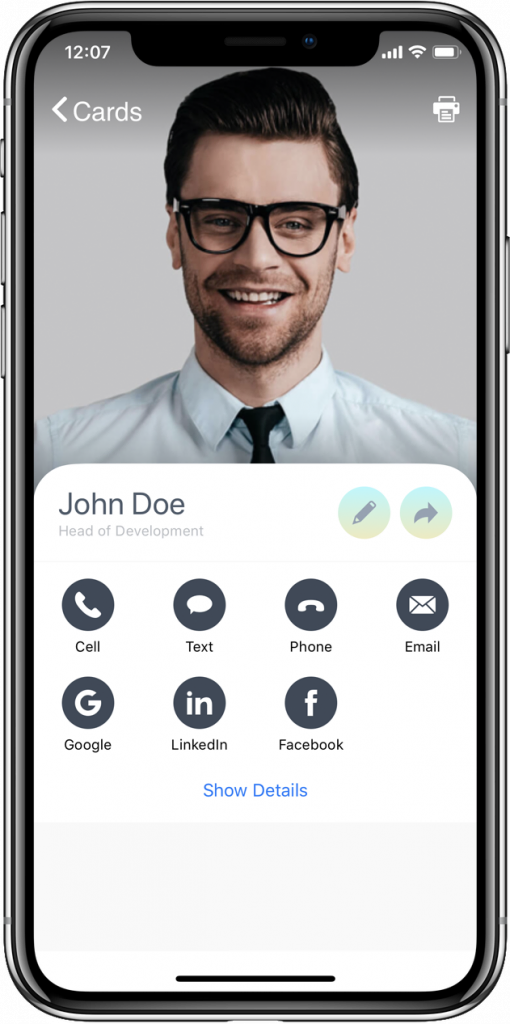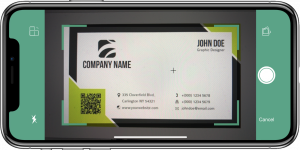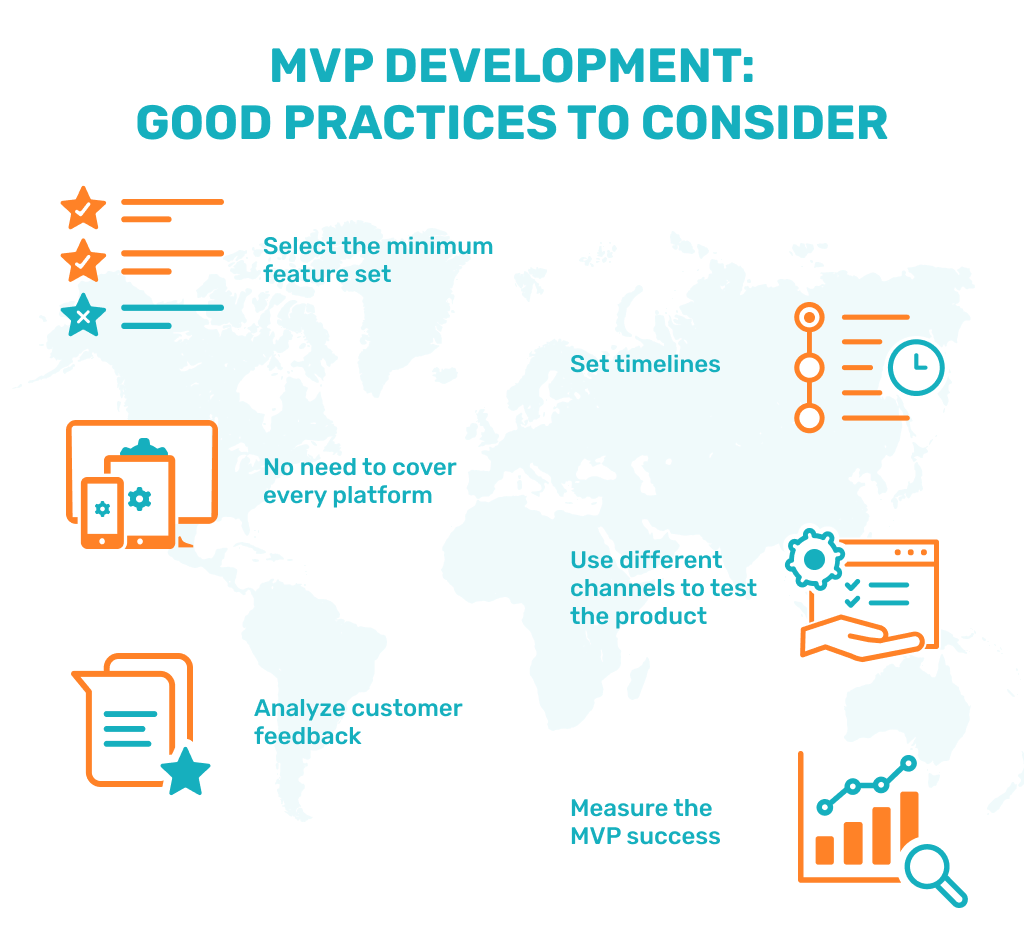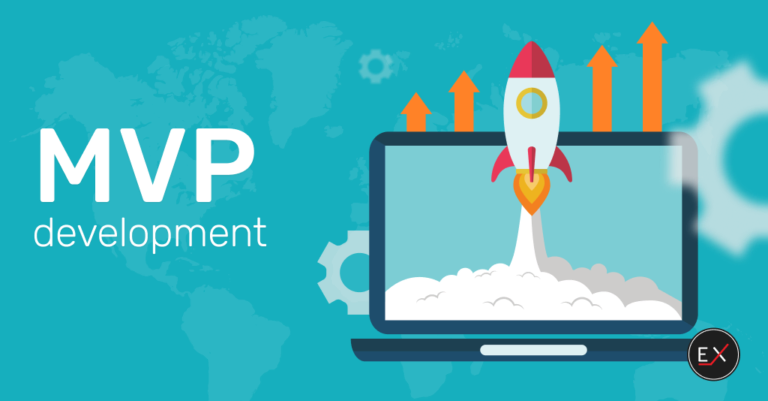
Updated: June 27, 2024
Published: August 22, 2019
MVP development will be a reasonable solution for every company that wants to create a successful product. Numerous businesses widely use it because it gives many distinctive benefits. This article provides the overall development process overview and estimates the MVP development cost on the example of the mobile CRM application.
MVP product development has become a popular approach that is suitable not only for startups but for well-established companies. This smart business strategy covers core features that are presented to the users before the final release. It enables the gathering of customers’ feedback for future improvements. Thus the company spends less time and resources on development and testing while getting market recognition. Provided that the company is ready to leverage this approach, it is required to learn how to build a minimum viable product, estimate the expenses and organize the process in general.
List of the Content
- What is MVP development?
- How to build successful software with MVP?
- MVP development process
- How to go through the development process?
- MVP software development screen by screen example
- MVP development cost
- Good practices to consider for MVP product development
- In conclusion
WHAT IS MVP DEVELOPMENT
Have a great idea for building new software? But you keep concerning yourself about numerous aspects. How to arrange the development process? Is it worth investments? How successful can it turn out? All this causes hesitation over the right business and development strategies. In any case, teams should take some action to figure out details on every particular project.
MVP development is about delivering the basic version of your product to the market. Besides building it, the team focuses on the unique ability to test it with the target audience. MVP software development opens great business opportunities and arranges the development with the most reasonable approaches.
What is MVP development?
MVP is a minimum viable product that stands for the basic software version. With this approach’s adoption, the team facilities the development process, validates the idea, and finds users’ preferences.
Despite product differences, business objectives remain the same. The development teams will be interested in embracing the fundamental principles of any software development. MVP product development is a suitable solution as it allows tech companies to use:
1.Opportunity to manage resources efficiently
It is related not only to the investments of the future product. Companies need to decide on the team composition, specialists’ duties, responsibilities, and finally, budget estimation. Whereas this approach is based on process clarity and efficiency, it is much easier to identify product requirements and needs. Consequently, the company knows how to allocate resources and put effort into receiving the desired results. Starting small is already proved to be an efficient strategy. Considering examples of today’s know aggregators like Amazon, Groupon, Spotify, all of them went from implementing fundamental features to building full-fledged software gradually.
2.Opportunity to increase speed time to enter the market
Companies do their best to enter the market fast. Moreover, many of them consider presenting only advanced solutions at the first release. Indeed, it will take them from months to years to implement it. With MVP development, the team follows different principles. They focus on the core functionality and present it to the audience when it’s ready. Besides saving time, you have considerable advantages over competitors. It takes faster to adopt changes to the simpler app and continue the development immediately. Even the best products will need further improvements. Focusing on complexity initially has its risks, from putting off the release date to overestimating the overall abilities.
3.Opportunity to build a need around your product
The next business objective proceeds from the initial goal of every business. Companies want to deliver products to a bigger audience. Today’s clients are quite picky, and you have to capture their attention from the first seconds. Always think about how you can differentiate your software from others. For example, we can take mobile app development. There are almost 3 million apps in Google Play and over 2 million in the App Store. The point is about building the real need for your audience. Only distinctive functionality can make them come back to your software again and again. That is where MVP development suits perfect, as user expectations will always come first.
MVP app development is one of the greatest approaches to handle the development, learn the market needs and carry out better user engagement. Even though it seems a simple process, it has to cover a number of important aspects that we’ll mention in this article.
MVP DEVELOPMENT: HOW IT HELPS TO BUILD THE SUCCESSFUL SOFTWARE
MVP development is a well-known approach to deliver software. It has turned many great ideas into known market players. With examples like Amazon, Spotify, or Groupon, everyone will agree on how advanced these tech solutions are now. They have great functionality, unique designs, and many features that distinguish them from others. But it wasn’t the same at the very beginning. Every product has to make its way through. Moreover, its success depends on the number of facts that have to be considered during the process.
Starting with MVP product development brings countless benefits:
- Fast launch: It is less time-consuming and simpler to build the basic set of features. The development team eliminates delays with launching and creates products in the shortest possible time.
- Idea validation: Gathering customers’ feedback helps determine how successful the product is among the audience and defines further improvements. It is a great chance to validate the product objective in advance.
- Balanced budget: MVP for software development is based on budget-friendly investments. It allows tech companies to budget for every part of the business and prevents overspending.
- Reduced risks: Since the product delivery proceeds gradually, it automatically minimizes business risks. MVP development provides process insights regularly, thus teaches the team to avoid risks, including bad timing, technical risks, etc.
- Wider recognition: It’s the goal of every business to make their product popular on the market. With MVP app development, you work on brand recognition even before the major product releases.
Combining benefits, MVP for software development allows the team to stay one step ahead in product delivery. The key aspect is that it is suitable for building any type of software. Either you want to develop a mobile app or build a responsive web app, you can go with MVP product development. This approach focuses not only on the final results but divides the process into efficient steps. Tech experts always draw up an MVP project plan where further development depends on the previously received results. Besides bringing clarity to the process, the approach is known for flexibility and efficiency.
So, where can you apply MVP development to succeed with your ideas?
MVP in mobile app development
When it comes to mobile, this software is known for its tremendous popularity among users. If the companies want to reach a large audience, they need to consider building the mobile application. Teams could differ in development approaches (native or hybrid), applied tech stack, app categories, and sets of features. However, an MVP project plan is workable for all of them. As the competition gets tougher, it is a perfect chance to test your idea. MVP product development relies upon finding the best way for app implementation. Tech companies start with building the basic app, whereas received results guide them through further development.
How to approach mobile app development?
You can check the step-by-step guide to the overall process and how to view it from the client’s perspective.
MVP in web development
Web presence is among the basic requirements for every business. Choosing this software type for your business will mean that users will be able to access your tech solution anywhere via the web browser. Web applications run on multiple platforms, including different operating systems and devices. Consequently, it is a good idea to test your product on more than one platform. With MVP for software development, the team will be able to focus on functionality and cover scalability requirements. Moreover, web solutions help to reach a consistent user experience over different channels.
Need more details on custom web app development?
Learn about the efficient process, available technologies, SDLC models, and best practices.
Accordingly, this approach is a starting point towards implementing the software. You never know as you can start with the simple app that later can be transformed into a complex system combining various solutions. So how do you organize an MVP development process?
MVP DEVELOPMENT PROCESS
It is essential to understand the process of implementing apps with an MVP project plan. It is always the sequence where business and market analysis fluently transforms into development and testing. Each stage has something crucial, and we recommend getting familiar with the explanation with most details below.
The main focus is to receive the minimum viable product that helps you identify, create and provide features that meet the customers’ expectations and needs. If you want to enter the market with a new proposition, you’ll spend time testing, learning, and improving.
So how to create a minimum viable product? The main point here is to follow the step-by-step approach that includes the following stages:
Product definition
That is a common thing when the company gets the project idea and finds a way to turn it into a reality. The idea is an inevitable part of any product, but its purpose should be concerned first of all. Product definition includes the understanding of your business as well as market needs. You need to identify your users and analyze your competitors’ offers to present a reasonable, attractive, and unique offer. You need to come up with something new for your users. It isn’t always about giving more to your customers in terms of app complexity. Indeed, it is a way to present something simple though valuable for them.
Priority identification
You have to learn to get your priorities straight. Every professional MVP development company knows that it is not the easiest but really important stage for careful consideration. You need to step into the user’s shoes and learn what they expect from your product. The list of requirements will help you to identify the core functionality. Just remember, you cannot implement all features at once. It will influence the overall process and the user experience. It is better to connect the main functionalities to the general purpose.
Implementation
After clarifying priorities, start building the MVP app itself. Like with any other software, the MVP development company needs to decide on the technology stack and approaches. Developers should pay lots of attention to the scalability of your solution. The team is not only giving a try for the product idea, but they make its core version. Features are dependable, so developers need to think ahead about what to add later. Therefore, the core version has to be capable of future innovations but specifically-oriented at the beginning.
Launching
When the company focuses on launching the MVP app to the market, they can do it differently. However, the main goal is to orientate the minimum viable product towards potential users. The well-established companies use marketing techniques like advertising to promote the product. In contrast, startups use this stage to present their product both to users and possible investors. In any case, they are looking for the same things – feedback and recognition from customers.
Feedback
Gathering users’ feedback helps to review and evaluate your previous work. Collecting and learning the comments on your MVP application design and performance, you will find out what is missing and what features are unnecessary. The customers’ reaction determines your abilities and whether your product is suitable for the market. You never know what users will value more in your product. It happens many times that they can suggest new feature ideas and give handy hints on necessary advancements.
Improvement
By choosing MVP app development services, you move in the right direction. Any improvements are under careful considerations of technical and business needs. The team can constantly adjust the process as necessary. The improvement stage concentrates on testing and learning the quality to reach the initial goal. The company will be ready to direct resources on successful products and be satisfied with the final results. In the end, you are able to withstand the intense market competition and gain regular customers for your product and services.
The last but not least point is that MVP development is a continuous process. After delivering the core version, the team keeps on applying similar principles. It is the fastest and most efficient way to handle improvements, extend the functionality and deliver better performance.
MVP DEVELOPMENT: HOW TO GO THROUGH THE PROCESS
Discovering the main stages of MVP development, we’ve prepared more details to streamline the process. Companies’ needs vary depending on the initial ideas and tech approaches to implement them. Though the product’s success greatly depends on how well they can set up the overall process.
The first thing to start is to arrange a professional team. There is a misleading idea that MVP app development services require smaller teams. It is more about splitting the workload into clear tasks and targeting at their successful completion. Supporting collaboration between all team members will bring the expected results. There’s always room for improvement if the team understands needs and follows good practices. Make sure to arrange the team of experts with relevant expertise to complete tasks properly.
- The product owner validates the product during the development process.
- The project manager is responsible for the process management and arranges communication between involved parties.
- Business analysts define and document product requirements, analyze feedback and outline new solutions.
- Developers implement software, including backend and frontend.
- QAs are responsible for checking the product quality.
The companies have to pay special attention to the expertise and experience of hired developers. As you know, there is a common division between developers. If we talk about MVP in mobile app development, companies will look for mobile developers specializing in hybrid or native solutions. Handling MVP in web development is possible with the help of both frontend and backend developers.
The technology choice is the next thing to consider. If someone perceives MVP app development as only idea testing, they question other principles of this approach. The minimum viable product has to remain the strong foundation for further development. The technology stack is often among the decisive factors. It is always better to use up-to-date technologies. We mean not only following market trends but choosing the best technologies to meet the product requirements. The great idea is to draw comparisons between market representatives, check technology stability and community support. The team has to be a couple of steps ahead and predict future needs. There is no point in rewriting or migrating apps to the newer technologies after MVP development.
We’ve compiled the list of common technologies applied in software development.
- Databases – MySQL, PostgreSQL, Microsoft SQL Server, Oracle
- Back-end development – Node.js, Java, .NET, PHP
- Front-end development – React, Angular, Vue.js
- Native iOS development – Swift, Objective-C
- Native Android development – Java, Kotlin
- Hybrid mobile development – Flutter, React, Xamarin
The technology choice for MVP app development services remains the same. If the tech stack is suitable to project needs, it helps to arrange the process with the minimum technical and business risks. For example, by choosing Flutter for MVP in mobile app development, teams aim at building fast solutions though support scalability for adding extra functionality in the future.
Need assistance on the technology choice?
Apply for the consultation with EXISTEK. We have extensive experience in software development and be glad to share it with you.
And finally, you need to maintain consistency during the whole process. As long as MVP development provides the team with a solid plan, it brings consistency to the development process. It helps to adapt your approaches and get focused on each development stage. If the team follows the step-by-step plan, they have all the necessary tools to evaluate and prioritize the arising needs. It ensures better awareness and allows the team to build the product up effectively.
MVP SOFTWARE DEVELOPMENT SCREEN BY SCREEN EXAMPLE
Now let’s explore how the teams apply the aforementioned process in practice. We’ll take the MVP app template of the mobile application developed by our company EXISTEK. Let’s use the Product Definition – Priority Identification framework to see what features to deliver for the MVP mobile app and publish it in App Store and Google Play.
Product definition
In our case – the product is a mobile CRM application for the easy storage and management of the contacts obtained during the business meetings, events, and just a regular everyday work of a sales representative.
Priority identification
Every team starts compiling the list of the features to implement in the full version of the application.
From the product definition, we learned that this is the mobile customer relationship management system. To meet customers’ needs and requirements, we’ve come up with the following features:
- Login via email
- Login via social networks
- Creation of the user account
- Manual creation and editing of the new contact
- Automated creation of the contact via OCR business card scanning
- Location of other app users in the same area
- Integration with most popular CRMs such as MS Dynamics, Salesforce, etc.
As to choose functionality for MVP, the team started with defining features CRM can not work without. Those are the creation of user accounts to sync the data with the cloud. It will ensure that contacts are available from any device and the ability to create, store and manage the contacts data.
Creation of the account and being able to create and manage contacts – those are the features necessary for MVP development of the CRM application.
At the same time, features like automated OCR creation of the new contacts, geolocation of other app users, integrations with other CRM systems are redundant because the app can still perform its main task (contacts storage and management) without introducing those functions at the first launch.
Implementation
Besides the core version implementation, we understood the further need to add more sophisticated features. It took some time for planning and preparation. As a result, we decided on the native app development approach that allowed us to deliver robust apps for Android and iOS. The team focused on a great performance, customer experience, and scalability of the built solution. As for the technology stack, we’ve chosen Swift for iOS development and Java for Android app development.
Launch
Let’s see how apps’ screens look like using the MVP app template. We will describe each of them according to the customers’ needs and how to provide a great user experience. Later, this will also explain the average MVP development cost depending on the list of planned features.
The login screen allows the user to log in to his account or create a new account.
The signup screen has the standard fields needed to make a new account.
The login page allows you to use existing credentials. You can see other options for authorization at the bottom of the screen, like via Facebook or LinkedIn. That is the perfect application example of the features that take extra time and are feasible but not necessary at the launch. Old fashioned email login would be enough.
That is the screen where the user can manage his personal information, add new contact details to his digital business card, etc.
The user can manually create or edit the contact on this screen, add email, photo, phone, address, organization, and other details.
That is how the contact card looks like within the application. Tapping on the specific contact details, the user can initiate the call, email the client or open the link in the browser.
Feedback
The core version of the CRM application has gathered all the necessary functionality to handle the basic user needs. The customers were satisfied with its slick interface and acknowledged the simplicity of managing the contact data. The team has realized the need to add more convenience for users, especially with adding new contacts when the user just has a business card. OCR functionality was a perfect solution to recognize the text and input the data to the contacts.
Improvement
For this CRM application, we’ve created the contextual aware machine learning OCR feature written on Python.
It scans the business cards, recognizes the text in the fields, and understands the field’s type. The added feature can automatically distinguish the field with the name and, for example, the field with the position and input that data to the contact card, thus saving a lot of the user’s time and efforts.
The last screen is the perfect instance of the feature that will be “too much” for the minimum viable product development. However, some companies are interested in building the OCR MVP mobile app. MVP development focuses on implementing the app version to serve its primary goal without too many bells and whistles. Any other sophisticated features are subject to further development. Developers will add them one by one after careful consideration and approval of both customers and business analysts.
MVP DEVELOPMENT COST ON THE EXAMPLE OF THE MOBILE CRM APPLICATION
Let’s use the sampled mobile CRM application to determine how much companies could spend on MVP software development. Like with any other mobile app, the development goes through the following stages: concept design, backend service development, front-end development for iOS and Android, testing, and, finally, launch.
As a result, we needed to involve such specialists as a project manager, UI/UX designers, one full-stack developer, iOS and Android developers, QAs. The MVP app development cost estimation includes expenses on each development stage with all required specialists’ involvement. Note that provided calculations are made using the average Eastern European rates that are lower than in the US or Western European countries. Thus the exact app cost could also vary depending on the location of the development team.
- Reasonably good-looking UI and UX design for the six screens would cost approximately $2 000 and take up to 4 weeks to complete with all iterations.
- The backend with the cloud-based database of the users and their contacts would cost about $3 000. That also includes APIs and services ready to be connected with future features and integrations with other CRM systems and social platforms.
- Google Play ready native Android application development, testing, and connecting to the backend would cost approximately $5 000
- Native iOS app, ready for publishing to the App Store, would cost approximately $6 000.
- QA for two platforms will cost $1 000.
As a result of this simple calculation, we have the final MVP development cost of approximately $17 000 for the native iOS app and Android one. This very version of the application perfectly corresponds with the initial goals. Although such minimum viable product mobile apps can be built at a lower cost, for example, using hybrid development. With the development of hybrid frameworks, you have all the necessary tools to implement a solution that doesn’t double the developers’ work. Indeed, it allows them to create and maintain one application for two platforms.
In our case, we have aimed to begin MVP app development using the native framework for each platform. That provides users with stability, better performance, and trendy design, thus ensures high user retention and attractiveness for potential investors. Under the hood, it has a powerful back end that is ready to implement the new features, which means that further updates will be quick and easy to introduce. Such MVP app development cost could be up to $17 000.
In general, MVP development cost can be between $10 000 and $50 000, depending on the complexity and client requirements. We hope that this example of cost for the product of medium complexity will help our readers to build an analogy and make a correct suggestion of how much their MVP development would cost.
These factors are essential, especially for those who work using the founding rounds model because they have to be extremely agile while still limited in time and resources. It allows the team to present quality products and find the right direction for further improvements.
MVP DEVELOPMENT: GOOD PRACTICES TO CONSIDER
We should accept the fact that creating software is a complex and lengthy process. The development teams do their best to adopt business strategies and tech approaches for product delivery. In the case of MVP development, they have a chance to combine the good practices and find out how their idea works in reality. MVP for software development not only deploys the solution but also presents valuable insights. It is about maintaining the proper balance between technical and business needs.
Moreover, the MVP project plan has gathered principles suitable for all types of software development. It helps to guide the team through the process and set priorities for adjustments. If you consider MVP development for your next project, there are a few more useful tips to pass.
Select the minimum feature set
The initial stages of MVP development focus on identifying all possible ways to build tech solutions. Having the idea is not always enough as it is just the first step in getting product definition. It is obvious that the overall development process greatly depends on the agreed functionality. The team has to sort out features that will be added to MVP software. The misleading concept is that the team has to work on the product with limited functionality. The MVP project plan should never put a limit on the product implementation. Indeed, it considers every functional and nonfunctional possibility though taking top priorities first. If we return to a CRM mobile application example, the team compiled the complete list of features and then chose the minimum set. The main idea is that this core set of features has to present the product concept and meet the basic user needs.
Set timelines
One of the primary purposes of MVP software development is a fast product launch. The sooner the team builds the solution, the more time they have for measuring and learning from received results. Since the team starts with clearly defined core functionality, they can make an accurate estimate to implement it. There is no necessity to add something just in the middle of the MVP development process, even if it is the best idea ever. All the planning has to be done before the actual development starts. In their turn, set timelines streamline the process and reduce the chances of doing something wrong. It is normal to start with the basic features as there is a slight chance to predict all user preferences at the first launch. Keep in mind that the same approach is workable for making adjustments. You can start improvement after careful consideration, set requirements, and defined timeframes.
No need to cover every platform
You might say that it’s a pretty controversial decision when other market players make products accessible everywhere. But let’s get back to such objective in MVP app development as testing the idea on the market. Can you imagine spending months building several solutions, including mobile and web, and then realize that users are not interested at all? Of course, this is the worst situation, but it shows how to set the right priorities. The MVP development company is always very specific to every single product. At the same time, nothing takes them from a broader view or getting things in perspective. After the successful implementation on one platform, they will proceed with the next one. Moreover, it will be faster and easier to integrate ready decisions into a unified system to support a consistent user experience.
Use different channels to test your product
The more testing methods the MVP development company employs, the faster they can define its gain and pain points. Besides testing the product by QA specialists, you need to gather user feedback and comments from the target audience. It is a valuable source that informs about real experience and how users perceive your products and services. The team should gather feedback via various channels like social media, short surveys, customer interviews, etc. It allows you to establish relations with your target audience and get them engaged. At the same, user feedback is an important source of opinions for potential customers. Make sure to share gathered feedback with others, as it often becomes the most trusted ad. Many new clients come through word-of-mouth recommendations these days.
Analyze customer feedback
Another goal of MVP app development is to make good use of collected feedback data. The gathering is only halfway, whereas data insights ensure better decisions for tech and business moves. As a result, it helps to validate the product and build the growth strategy. That provides turning the assumptions into workable solutions. As you review the user feedback, make sure to categorize it. It is not that hard to divide user comments, but you’ll know what issues to address. It can be related to different subjects and handled accordingly. For example, high-stakes feedback can point to issues that request immediate actions like security bugs. When it is a new feature request, you’ll brainstorm the idea objectively whether to add or not.
Measure the MVP success
In business, defining success can not be perceived as the bottom line. Success is not only about gaining millions of users or earning a fortune from the first release. It is essential to get track of achievements during the whole product life cycle. It is easy to find some metrics and use them as indicators to measure accomplishments. How many users download your mobile app in the first-month post-launch? The more downloads you get, the more popular your software is. But how many of them continue using the app? That is why it’s important to track the percentage of active users and the churn rates. When you know the actual situation, you’ll be able to achieve goals faster.
IN CONCLUSION
Talking about the MVP development, we can conclude that companies seize the opportunity to build their app faster, attract more users while their budgets might be limited. It is a good balance between technical and business aspects. Companies have a great chance to meet customers’ needs and streamline the development process. We hope that this article has defined the main cornerstones of the overall strategy, outlined requirements, and gave some fresh ideas for implementation.
Have more questions or need a consultation?
EXISTEK knows how to build user-attractive and market-competitive products. We are a professional software development company that has successfully applied the MVP approach for many products and ready to share our experience with you.
Frequently asked questions
What is MVP app development?
MVP has become a popular development strategy for delivering successful products. In short, it is a basic app version that includes fundamental features. It facilitates the development process and ensures advancements based on user experience and feedback.
How do I create an MVP app?
MVP development is the sequence where business and market analysis transforms into development and testing. This process covers the following stages:
Product definition
Priority identification
Implementation
Launching
Feedback
Improvement
How much does it cost to build an MVP?
Depending on the app requirements and complexity, the MVP app development cost could fluctuate from $10 000 to $50 000. Moreover, the cost differs due to other factors like the chosen tech stack, team composition, developer service rates, etc.
What makes a good MVP?
When the company wants to come up with a good MVP solution, they need to consider the next aspects:
Use resources efficiently
Include only the core functionality
Produce the basic design
Learn from users’ feedback
Work on gradual improvements

